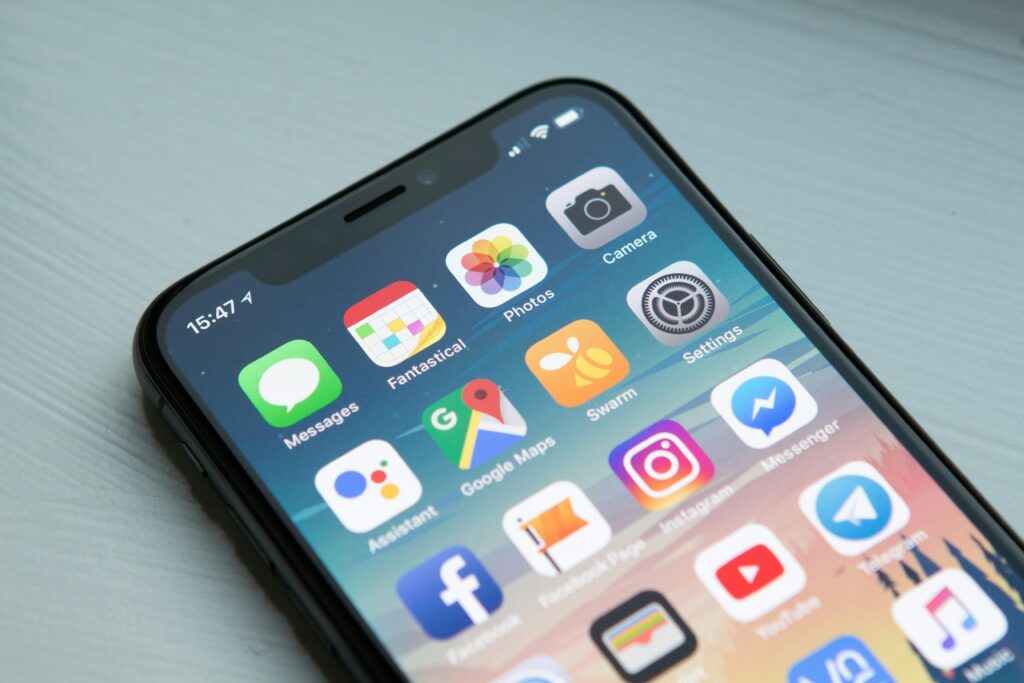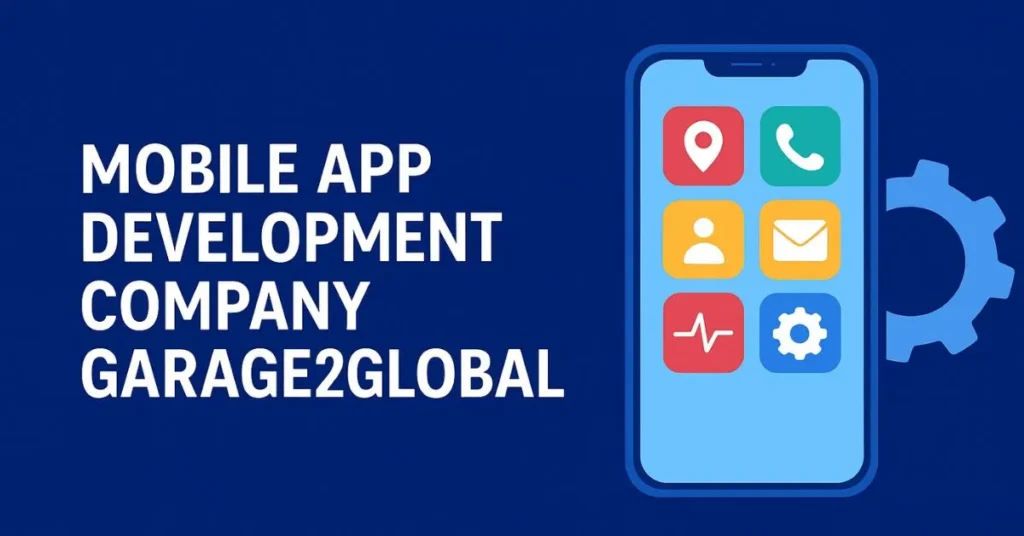What is App Development?
In today’s digital-first world, creating apps has become one of the strongest forces driving technology, business, and daily life. From checking the weather to scrolling through social media or booking a ride, we constantly interact with various applications. They have reshaped industries like banking, e-commerce, healthcare, and education by making services easier to access and more efficient.
With over 7 billion smartphone users worldwide and millions of companies transitioning to digital platforms, the demand for innovative apps is growing at an unprecedented pace. According to Statista, global mobile app revenue is expected to hit $613 billion by 2025. Whether you’re a student beginning your career, a professional upgrading your skills, or a business owner planning to scale digitally, mastering this field in 2025 is essential.
At its core, building applications is the process of designing software for various devices, including smartphones, tablets, desktops, and browsers. It covers ideation, design, coding, testing, deployment, and continuous improvement. Successful projects combine creativity with technical expertise to deliver smooth and engaging user experiences.
What is App Development?
App development is the design and creation of applications that solve specific problems or perform useful functions. Apps may be standalone or connected to cloud-based systems.
Types include:
- Mobile app development: iOS, Android, or cross-platform apps (e.g., WhatsApp, TikTok, Uber).
- Web app development: Browser-based apps like Gmail, Canva, or Trello.
- Hybrid app development: Apps combining mobile and web technologies (e.g., Instagram, Twitter).
Beyond coding, this process also involves UI/UX design, API integration, security, and ongoing updates to ensure performance and usability.
Different Types of App Development (Mobile, Web, Hybrid)
Mobile App Development: Native vs Cross-Platform
Mobile apps dominate digital interactions. Developers can build apps in two ways:
Native Apps
- Built with Swift (iOS) or Kotlin (Android).
- Deliver the best speed, performance, and access to hardware features.
- Cons: Expensive, requires separate teams for iOS and Android.
Cross-Platform Apps
- Built with frameworks like Flutter or React Native.
- Single codebase runs on both iOS and Android.
- Pros: Saves time and cost.
- Cons: Slightly lower performance for complex apps.
Why Mobile Apps Stand Out:
- High speed & performance
- Access to device features (GPS, camera, sensors)
- Works offline
Challenges:
- Higher cost (for native apps)
- Frequent updates for OS compatibility
Web App Development: Benefits and Challenges
Web apps run directly in browsers and mimic the experience of native apps.
Examples: Google Docs, Slack (web), Netflix.
Pros:
- No installation needed
- Cross-device compatibility
- Easier updates and maintenance
Cons:
- Requires internet connection
- Limited hardware access
- Slower than native apps
Hybrid App Development for Cost-Effective Solutions
Hybrid apps use HTML, CSS, and JavaScript, packaged in native shells.
Frameworks: Ionic, Xamarin, Cordova.
Benefits:
- Cost-effective
- Faster to develop
- Wide reach across devices
Drawbacks:
- Lower performance
- Limited access to advanced device features
Top App Development Tools & Frameworks in 2025
| Tool/Framework | Best For | Strengths | Limitations |
|---|---|---|---|
| Flutter | Cross-platform apps | Fast, beautiful UI, single codebase | Larger app size |
| React Native | Hybrid apps | Native-like performance, large community | Performance issues for complex apps |
| Swift | iOS apps | Secure, high-performance | Limited to the Apple ecosystem |
| Kotlin | Android apps | Easy syntax, Google support | Limited to Android only |
| Node.js | Backend development | Scalable, lightweight, fast | Not ideal for CPU-heavy tasks |
| Angular / Vue.js | Web apps | Flexible, strong ecosystems | Steep learning curve |
| Firebase | Full-stack support | Hosting, authentication, analytics | Vendor lock-in |
Emerging Technologies Shaping Application Development
- Artificial Intelligence (AI) & Machine Learning (ML): Powering chatbots, predictive analytics, and personalization. Learn more from TechCrunch on how AI is shaping the future of apps.
- Augmented Reality (AR) & Virtual Reality (VR): Gaming, healthcare, education, retail.
- Blockchain: Secure transactions & decentralized apps (DApps).
- 5G Connectivity: Faster speeds, seamless streaming, AR/VR apps.
- Cloud Computing: Scalable backend infrastructure.
- Internet of Things (IoT): Smart home, wearables, connected healthcare.
The App Development Lifecycle: Agile vs DevOps
Phases of App Development:
- Planning & Research
- UI/UX Design
- Development
- Testing
- Deployment
- Maintenance & Updates
Agile: Flexible, iterative releases, faster time-to-market.
DevOps: Automation, CI/CD pipelines, continuous testing & deployment.
Today’s best practices often combine Agile and DevOps, creating a more efficient workflow from design to deployment.
How Much Does Building an App Cost in 2025?
- Simple apps: $10,000 – $30,000
- Medium complexity: $30,000 – $70,000
- Complex apps (AI, AR/VR, IoT): $70,000 – $200,000+
Hourly rates:
- Freelancers: $30–$150/hour
- Agencies: $50–$250/hour
Outsourcing: Countries like India, Pakistan, and Eastern Europe offer skilled developers at lower costs.
Upcoming Trends in the App Industry (2025 & Beyond)
- AI-driven personalization
- AR/VR in retail, education & entertainment
- Super apps (multiple services in one app)
- Wearable and healthcare-focused apps
- Low-code/no-code development
- Cybersecurity-first app design
- Green/sustainable apps with energy efficiency
Careers & Job Opportunities in the App Industry
In-demand roles:
- Mobile App Developer (iOS/Android)
- Web App Developer (Frontend/Backend)
- Full-Stack Developer
- UI/UX Designer
- App Project Manager
- QA Engineer & Tester
Average salaries (2025):
- Entry-level: $50,000 – $80,000
- Mid-level: $80,000 – $120,000
- Senior developers: $120,000 – $160,000+
Freelancers with niche skills (e.g., AI/AR apps) often charge premium rates.
Case Studies of Successful Apps
- WhatsApp: Simple UI → global messaging leader with 2+ billion users.
- Airbnb: Transformed travel by connecting hosts & guests worldwide.
- TikTok: Used AI + short videos → $80B+ valuation.
Best Practices in App Development
- Focus on user experience first.
- Ensure security with encryption & compliance.
- Adopt Agile & DevOps workflows.
- Test continuously.
- Build for scalability.
- Gather user feedback and iterate.
Conclusion & Call-to-Action
In 2025, building apps goes beyond coding — it’s about delivering meaningful digital experiences. With innovations in AI, AR/VR, blockchain, and 5G, the possibilities are limitless. Whether you’re an aspiring developer, a business owner, or a tech enthusiast, gaining expertise in this field opens endless opportunities.
Are you planning to build an app in 2025? Stay updated with the latest tools and trends — subscribe to our blog for expert insights!
[helpie_faq group_id=’21’/]


